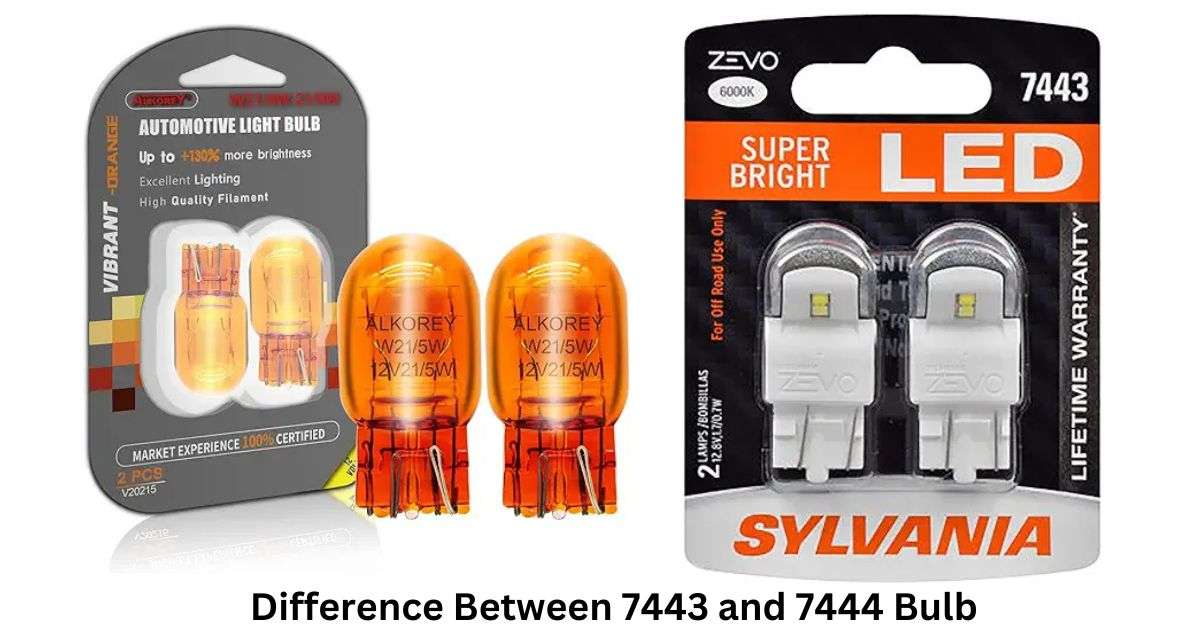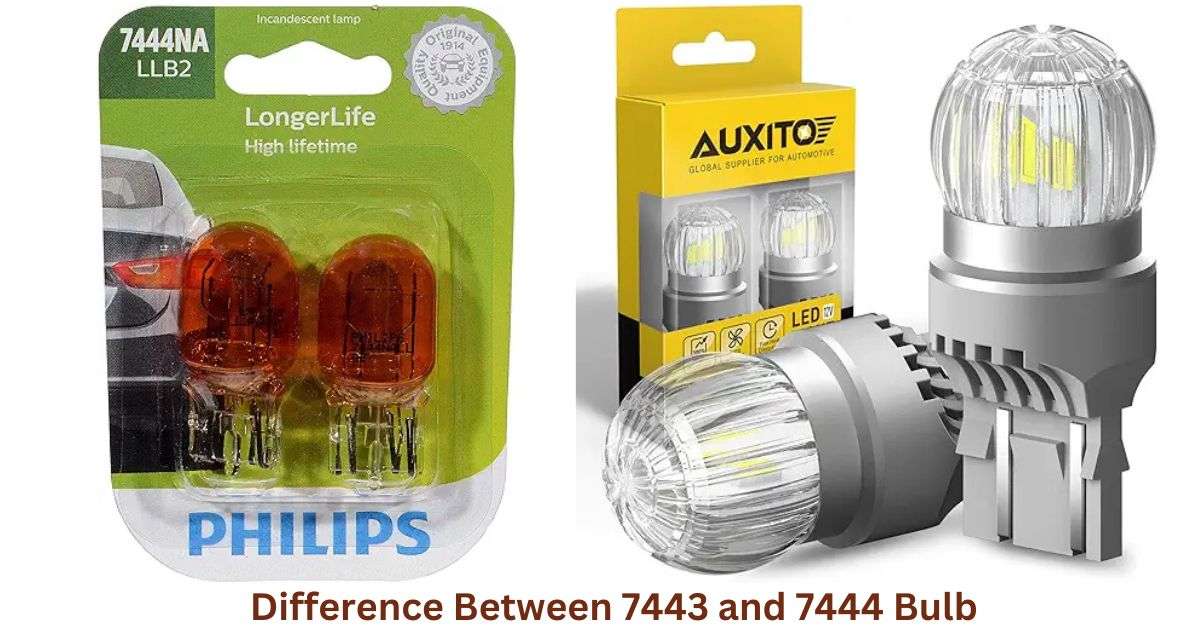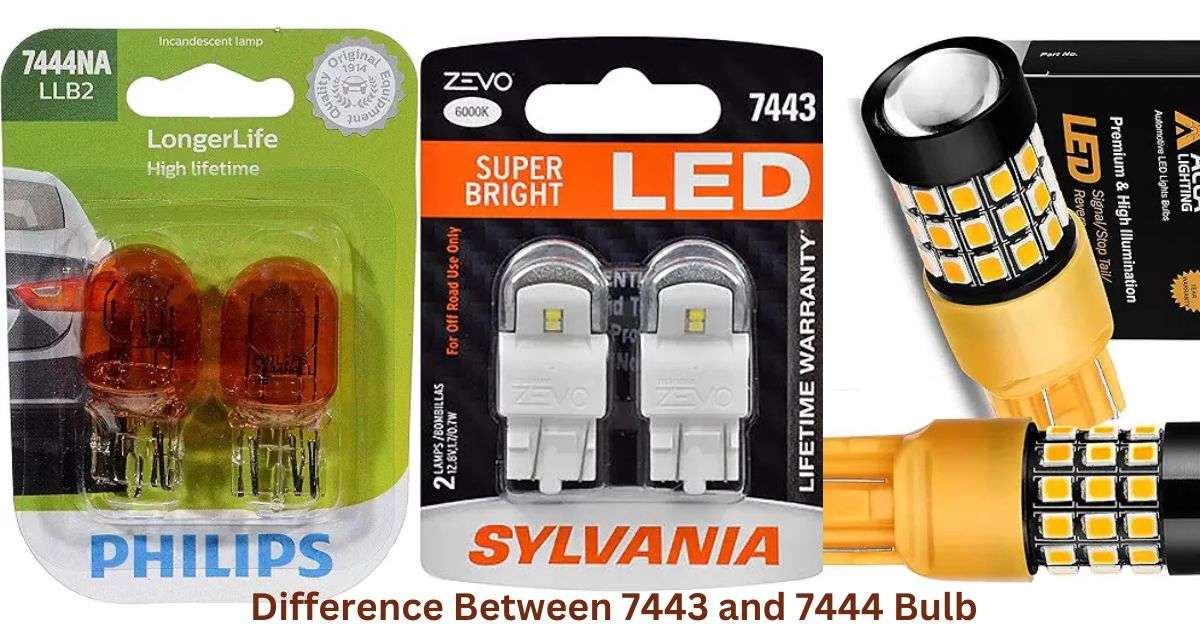Did you know that choosing the wrong replacement bulb can lead to electrical issues or even damage your vehicle’s lighting system? It’s a common mistake many drivers make! The debate between the 7443 and 7444 bulbs often leaves people scratching their heads. Surprisingly, the difference isn’t just in their numbers—there’s a 20% difference in their power handling capabilities! Let’s break it down so you can make the right choice for your vehicle.
Physical Characteristics and Base Configuration
At first glance, the 7443 and 7444 bulbs look nearly identical, but their physical features tell a different story:
- Dimensions: Both bulbs share similar sizes, ensuring they fit into standard sockets.
- Base Design: The 7443 bulb features a dual-filament design with standard pin alignment, while the 7444 bulb often includes minor variations in pin configuration. This affects their compatibility with certain sockets.
- Material Construction: The 7443 typically uses slightly less heat-resistant materials than the 7444, which is designed for higher power handling.
- Socket Compatibility: Both bulbs are designed to fit in dual-function sockets, serving as tail lights and brake lights. Always double-check compatibility to avoid installation mishaps.
- Color Temperature: Most 7443 and 7444 bulbs come in standard white or warm tones, though LED options allow for more variety.
Electrical Specifications and Performance
Here’s where the real difference lies:
- Wattage: The 7443 bulb generally has lower wattage, making it energy-efficient for basic lighting needs. The 7444 bulb, on the other hand, handles about 20% more power, making it ideal for vehicles with higher electrical demands.
- Voltage Requirements: Both bulbs operate at 12V, standard for automotive lighting, but the 7444 tolerates slight voltage fluctuations better.
- Current Draw: The 7444 bulb draws more current than the 7443, which could affect battery life in older vehicles if not monitored.
- Operating Temperature: With better heat resistance, the 7444 bulb operates at higher temperatures without compromising its lifespan.
- Lifespan: Both bulbs last for years under normal conditions, but LED variants of the 7444 often outshine the 7443 in longevity.

Common Applications and Vehicle Compatibility
Not all vehicles use both bulbs interchangeably. Here’s how they differ in usage:
- Popular Vehicle Models: The 7443 is widely used in vehicles for tail lights, brake lights, and turn signals.
- 7444 Bulb Applications: This bulb is more common in vehicles with higher electrical requirements, such as SUVs and trucks.
- Manufacturer Recommendations: Check your vehicle manual or consult an expert before choosing between the two.
- Cross-Reference Compatibility: Some aftermarket suppliers label these bulbs as interchangeable, but verify your vehicle’s needs for optimal performance.
- Upgrade Considerations: Upgrading to LED variants of the 7443 or 7444 can improve brightness and energy efficiency.
Installation and Replacement Guidelines
Installing a bulb isn’t rocket science, but attention to detail ensures a smooth process:
- Gather Tools: You’ll typically need a screwdriver and gloves to handle the bulb.
- Remove the Old Bulb: Access the bulb socket by opening the tail light housing.
- Insert the New Bulb: Ensure the pins align properly with the socket.
- Avoid Mistakes: Never touch the bulb’s glass directly; oils from your hands can shorten its lifespan.
- Safety Precautions: Disconnect the car battery to avoid electrical shocks.
- Test the Bulb: Once installed, turn on the lights and check for proper functioning.

Cost Considerations and Value Analysis
Price often plays a role in deciding between the 7443 and 7444 bulbs.
- Average Price Comparison: The 7443 bulb is slightly cheaper due to its lower power rating.
- Long-Term Cost Implications: The 7444’s durability and heat resistance justify its higher price.
- Performance vs. Price: If your vehicle’s lighting system demands higher performance, the 7444 is worth the investment.
- Warranty: Check for warranty coverage, especially when opting for aftermarket options.
- OEM vs. Aftermarket: OEM bulbs are more reliable, while aftermarket options offer affordability and variety.
Conclusion: What is The Difference Between 7443 and 7444 Bulb
Choosing between a 7443 and 7444 bulb doesn’t have to be overwhelming. While they may appear similar, their electrical specifications, applications, and durability make them suitable for different needs. Always consult your vehicle’s manual to confirm the recommended bulb type, and don’t hesitate to seek professional advice for compatibility checks.
Ready to upgrade your lighting? Selecting the right bulb not only enhances performance but also ensures your vehicle’s safety on the road. Make an informed decision today, and enjoy the peace of mind that comes with proper lighting!
Related articles:
Hi, I’m Malik Suhail—an SEO expert, web designer, and passionate blogger with 2 years of experience. I specialize in crafting content that is not only informative but also tailored to meet the needs of my readers.
I write about diverse topics, always striving to simplify complex ideas and provide valuable insights that resonate with my audience. Whether it’s about SEO strategies, web design trends, or blogging tips, I am committed to delivering well-researched, practical, and easy-to-understand information.
My mission is to help readers navigate the digital world with confidence and clarity. I believe in adding value through authentic content that inspires action and delivers results.

